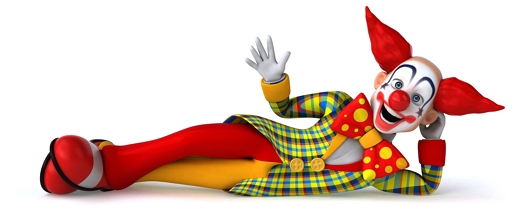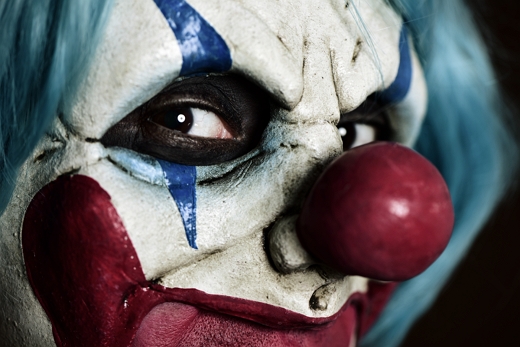Across history and different cultures, it seems clowns have always been around in some form. In ancient Egyptian, Grecian, Hittite◆, and Sumerian◆ cultures, distorted clown-like faces decorated everything from buildings to vases. The stage buffoon◆ has been a familiar character in Chinese stage dramas. __1__ Modern clowns serve as a release from nerve-wracking◆ circus acts or as merry contributors to children’s birthday parties. What do these characters have in common?
First, these figures all have almost human faces, with two eyes, a nose, and a mouth. However, unlike the changing looks of a human face, clowns have frozen expressions. __2__ These entertainers’ appearances are also highly exaggerated: inhumanly◆ large eyes, noses, and mouths, usually painted in bright, non-skin-tone colors. No wonder small children feel uncomfortable around them. __3__
A phobia is simply an irrational fear. Walking home alone late at night may bring fear, but this momentary◆ chill is normal. __4__ However, a person who becomes panicky◆ and unable to function whenever he sees the color yellow or beards or flutes, for example, has an irrational fear, or phobia. Coulrophobia may be due to clowns’ non-friendly or unnatural appearance.
As with most phobias, coulrophobia is difficult to cure. __5__ Since all phobias are rooted in the mind, helping sufferers of coulrophobia by being patient and understanding may be the best treatment.
(A)That is where coulrophobia, the fear of clowns, most likely begins.
(B)They are always permanently smiling, threatening, or sad.
(C)Psychiatric counseling may help, and anti-anxiety prescriptions can alleviate the physical stresses of fear.
(D)In Elizabethan England, the character of the clown-like fool was associated with dark truths or death.
(E) From anxiety and depression to panic attacks and phobias, sufferers of these conditions have benefited from hypnosis.
(F) Since many attacks occur at night, it is rational to feel insecure.
 
|


沒有留言:
張貼留言